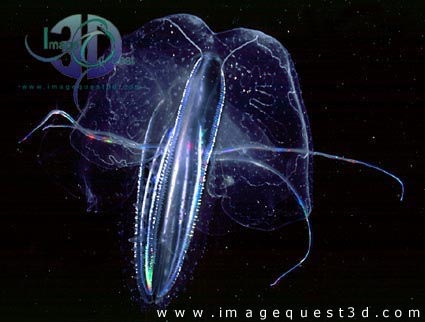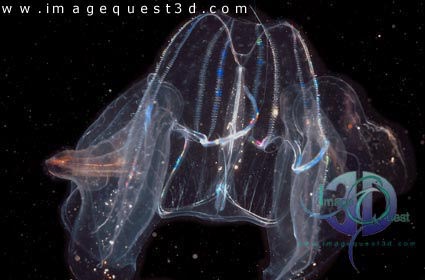|
"INSTANT DISINTEGRATION……AT A PRICE"
|
|||||||||
|
The previous dive had been in six foot of water in a municipal baths! I can think of better preparation for your first dive off the outer face of the Outer Barrier Reef of Australia - not for nothing called the Great Barrier Reef. I'd only been on Lizard island for a week and I was still trying to accustom to 36°C, 100% humidity and a water tank full of frogs and devoid of water! The station director, in those days Barry Goldman, suddenly flung at me an invitation to go with him and two other biologists to the Outer Barrier so as to take advantage of the perfect weather conditions. I would have wished for the family to go too, but the invitation was for one, not four. We departed early, arrived promptly and glided through one of the passes. Barry pointed down. In everyone's life there are a few breath taking experiences. This was for me one of those truly memorable moments. The flat calm conditions, the low slanting sun, the absence of white cloud reflection and the precise moment of look down, combined to hit me hard between the eyes. We seemed literally to fly off the edge of the world. The drop-off, on the outer face, was awe-inspiring. The colour contrast between the near-surface coral heads and the deep ultramarine drop-off was so clear and unambiguous. This was the edge of the abyss. Into this realm we prepared to dive. It took me three times as long as the others to kit-up. For about five minutes I struggled to remember which way my tank should face for the demand valve to come over my right shoulder. Then I was in……and gasping - partly from the cool of the water and partly from the sight ahead. The other divers all applied themselves to the coral faces, domes and colonnades. I hung in the crystal blue and focused only a foot or two in front of my face mask. I was surrounded by planktonic life forms of every size, shape and design. This was for what I had travelled eleven thousand miles. This was Mecca. I was happy. So while I drifted and gawped the others dived, delved and identified. Fifty minutes later Barry, who had been calmly free diving to eighty feet in pursuit of coral trout, gave us the signal to surface and clamber aboard the Trojan - our boat. I lazily swam towards the dive ladder - the last aboard. Just as I grabbed my final glimpse of this wonder-world, a large diaphanous entity drifted past my face and steadily receded into the dappled blue. It was at least forty centimetres long and I had the distinct impression of orange markings. Even with my lack of experience on that very first reef dive, I recognised it as a very large lobate comb jelly, but that was as far as I got. No-one on deck knew what I was babbling about and I doubt whether they cared. Lobate Comb Jelly - Leucothea ©
2001 by Image Quest 3-D
Read our copyright notice
The years passed and I never again encountered that comb jelly - not even a glimpse. In all those years I came to realise that even those wonderful aggregations of plankton were a rarity, let alone the prize amongst them. Five marine expeditions later and again I was on Lizard Island and again the weather was as calm and settled as I've ever seen it. I was alone in a sixteen foot Zodiac in the Deep Water Channel, west of the research station, and I was comb jelly-hunting. Oh, for one of those days when the plankton populations swirl all around the boat, but, no, this was a perfect day for looking, but there was nothing to look at. Normally, we'd hang beneath the boat and drift with the breeze and current. Alone, I decided it wiser to gaze from above - the sea's surface was so flat and visibility so good, there was no point in acting irresponsibly and illegally. For forty five minutes I drifted and peered. The odd salp went by - the occasional mini siphonophore spiralled beneath me, but never a single ctenophore. My concentration was waning when below me, some twenty feet or so, passed by a smudge of an entity. I drifted beyond direct viewing and had to employ the engine to circle round and hope to pick it up again. Luck was with me. I cut the engine and braked with the paddle so as to come in above and slightly to one side of the shape. Now it was a touch closer to the surface - still fifteen feet below me, but I could now tell that it was most probably a comb jelly and it was huge. Maybe fifty or sixty centimetres long. Curiously it was rectangular and quite clearly it had four dark patches, two at one end, two at the other. I now knew that I must have this beast. I wanted so desperately to see it up close and to show it to everyone back at the station. This was one of those rare encounters and I wanted it to last. I became aware that very gradually the ctenophore was coming to the surface, but it was painfully slow. I could manoeuvre the boat above it just by paddle power. The question now was should I dive in and retrieve it? Retrieve it? How, for heavens sake, was I going to grab something the consistency of flaccid frog's spawn - nearly two foot long! It dawned on me I had no idea what its vertical dimension was. It could be flat as a pancake or shaped like a Star Wars X-wing! Furthermore I had no container on board. Well, if I couldn't catch it, at least I could swim down and see it up close. At that moment a shadow passed through my peripheral vision. I looked up. A streamlined Grey Reef Shark circled towards me and beyond it a partner joined it. An unprintable expletive bounced across the flat calm sea. We'd often, as a pair or a threesome, swum with theses beautiful sharks, out here in the channel, in the course of retrieving planktonic specimens, but alone, the proposition seemed a little less than attractive and these five years in my reef diving experience had taught us all to be respectful of these one and a half metre characters. So here I was, now three metres above the one animal I had sought for five years, with no means of capturing it or even getting a close look - all because I was a wimp! For half an hour I tracked the beast and all the while it gently rose in the water column. Supposing it ceased to rise and again began to descend? I looked in the boat. There was a long handled net. There was no question of netting it, but just maybe I could assist its ascent by wafting the net beneath it. It was worth a try. I leant over the side of the boat and gently scooped the net below the ctenophore. It was deceptive - it was still deeper than I thought. It was still off the head of the net, rather than above it. I gently wafted. The soft tip of the net snaked up and came within an inch or two of the comb jelly and then it happened. My precious beast literally disintegrated into a thousand or more fragments. If sharks can laugh, I bet those two did! I was astounded. I was sure I hadn't touched the comb jelly and yet it had exploded! Why? How could it do that to me? More to the point, how could it do that to itself? Is there any survival value to this behaviour? Can any of the fragments regenerate into new, whole ctenophores? Since that encounter, I have spoken to many marine biologists and a few have had similar experiences. No one has been able to explain it. (Subsequent expeditions have provided the opportunity to catch perfect specimens of these beautiful Leucotheid comb jellies. The black marks are only black from above. From the side, with transmitted light, these smudges of black are orange! That first dive on the Outer Barrier had been in the company of such a beast.)
|



